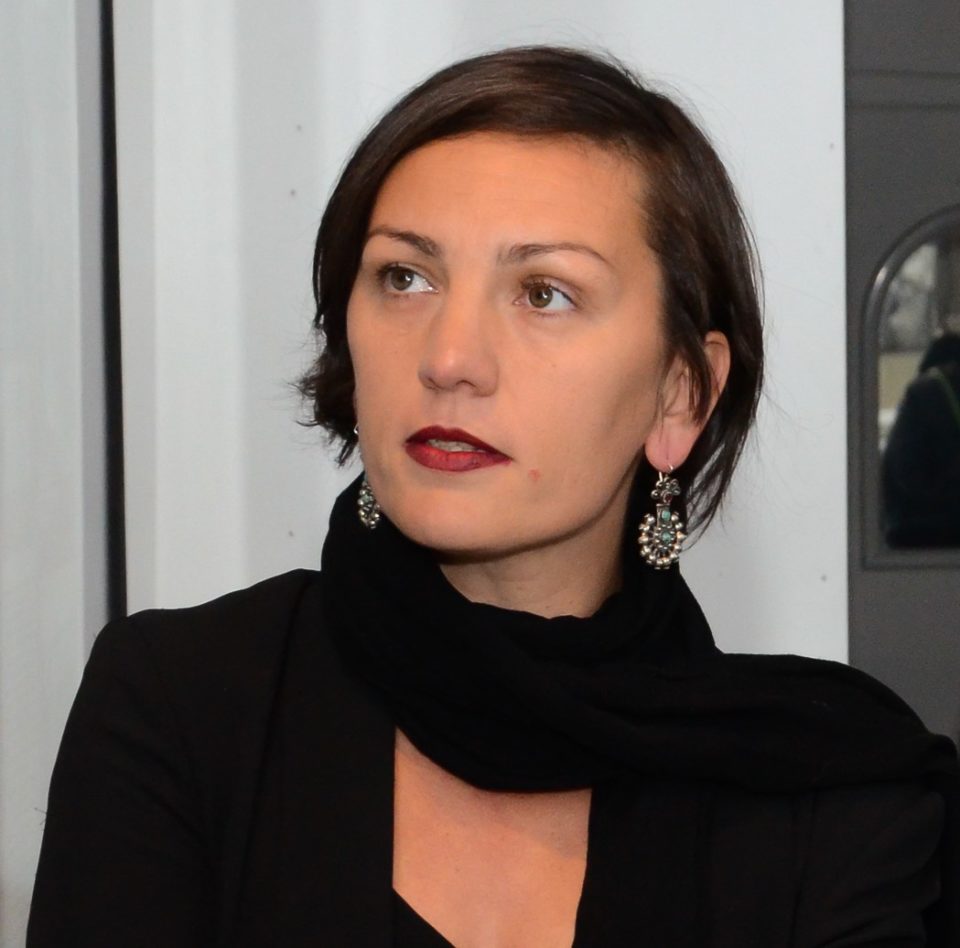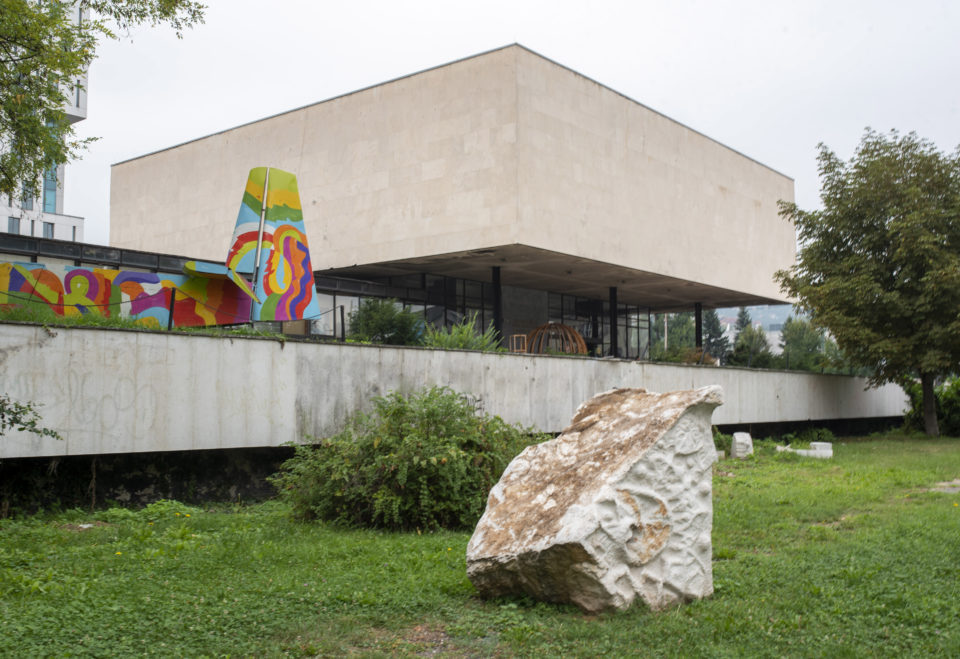
In times of unpredictability, museums defiantly safeguard history. The History Museum, which is dedicated to the history of Bosnia and Herzegovina from its first mention until today, is no exception.
Due to the political situation in Bosnia and Herzegovina, the four leading state museums (History Museum, National Museum, Museum of Literature and Theatrical Arts, and Art Gallery of BiH) are in an unenviable situation. Instead of being institutional pillars of culture, developing, proposing and showcasing positive cultural policies, these museums simply survive.
The History Museum of Bosnia and Herzegovina was declared a national monument in 2012, but this unique national monument – which enjoyed a golden age during the 1960’s – suffered a great defeat after the last war. The state renounces it, abandoning it to the fate of being “nobody’s museum”. The museum has been left to take care of itself for years. Authorities at every level, from cantonal, to entity, to state, have abandoned this cultural institution, refusing to provide it with regular funding and legal status.
“We are surviving because we have imposed a sense of the museum’s importance on ourselves and we are trying to raise awareness of that importance among the community. That is why we believe that we are here: not because of some unconditional state of being, but precisely because of the community and individuals in the museum,” says Elma Hašimbegović, director of the History Museum.

Searching for alternative solutions, the History Museum has become a symbol of defiance and one of the few cultural institutions that manages to survive without state aid. It is a reflection of the strong will of its employees, who did not succumb to the burden of state indifference even in the most difficult times. The History Museum strives to present to its visitors a different angle on stories of Bosnian pride, defiance and the desire for life.
More than 70 years of existence
The History Museum of Bosnia and Herzegovina was founded after the end of the Second World War, on November 13, 1945, as the Museum of National Liberation. It was originally located in the Sarajevo City Hall and, in 1963, it was moved to a purpose-built building at the Marijin Dvor. Its architectural structure makes it one of the eminent examples of the architecture of the former Yugoslavia. It was then that it experienced its golden age, which lost its luster at the beginning of the last war in BiH.
It was renamed several times, along with which its thematic structure was also changed. From 1967 to 1993, it was called the Museum of the Revolution of BiH, and in 1993 it was given its current name – the History Museum of BiH.
As the principal institution for the study and archiving of the history of BiH, the thematic structure of the museum includes the period following the arrival of Slavs on the Balkan Peninsula, the creation of the first medieval South Slavic states – in particular the medieval Bosnian state –, Bosnia and Herzegovina under Ottoman and Austro-Hungarian rule, and Bosnia and Herzegovina in the periods from 1918 to 1945 and from 1945 to 1990.
The Museum is home to approximately 400,000 artifacts, and its specialist area of research is the period from 1990 until today. The museum is the guardian of several permanent exhibitions, the most popular of which is Besieged Sarajevo, which testifies to the life of Sarajevans from 1992 to 1995. This setting tells the story of the perseverance of Sarajevans who lived under a siege for 1,335 days without electricity, heating, drinking water and, very often, food.
Melisa Forić, senior assistant in the Department of History at the Faculty of Philosophy, University of Sarajevo, believes that with the help of the History Museum of BiH, this society can explore its past in a “visual, meaningful and interactive way in accordance with the results of modern historical science and museology”.
“Who controls the past controls the future. Who controls the present controls the past,” wrote George Orwell in 1984. The novel also raises the question of where the human past is located, whether in physical or mental form, and this sentence in particular has a symbolic meaning for BiH – a country where the process of memorialisation is tailored to national group narratives.
We are always hearing about the importance of history for the survival of each national group, or for the nation as a whole, but this comes accompanied by a contradictory stifling of the real history that is housed within the walls of the History Museum.

On the importance of preserving the history of a country for the future, Elma shares that, for her, it is devastating when young people say that history does not concern them.
“And that is a devastating thing to hear because they are obviously not aware of how much the war past and the fate of post-war society is a responsibility that new generations have to deal with. But, on the other hand, it is a completely normal reaction for young people whose mental and public space is poisoned by those who impose on them what and how they should think, what history is, and how and what to remember.”
Informal educational institution
Pedagogical activities are an important part of regular museum work, and they play a significant role in shaping awareness of different narratives. Modern information technology has caused the development of museum pedagogy in BiH to be neglected .
“We know that good education is the foundation of a healthy society, and we are aware that Bosnia and Herzegovina does not have this foundation. This is where we see our chance. Our aspiration today is for the museum to be an educational institution, but for us to teach young people to critically question the past and other issues, that is, to think for themselves. We believe deeply that this is possible if we work continuously, thoughtfully, and in step with new trends,” points out Elma.
Melisa Forić highlights the dedicated work of the History Museum in the field of education. They regularly interact with young people and educational institutions, turning this Museum from “nobody’s” to “everyone’s”. It is a museum that is open to all.
In a conversation with young people, museum director Elma Hašimbegovic noticed that they had become saturated with stories about the war. “Unfortunately, beyond the main discourse and official policies, there is little room for a constructive dialogue about the past, which the History Museum of Bosnia and Herzegovina has been trying to offer for years. Museums preserve and remember history for much longer than the lifetime of the political systems in which they were built, systems that try to create memory policies and control what and how we remember. Even when the museums themselves are built for those systems, they usually outlive them,” she explains. .
And indeed, for all those who appreciate history presented in a different way, this museum stoically safeguards just that. The History Museum survives thanks to the enthusiasm of a valuable group of people who refuse to allow any authority to relegate it to the position of silent, irrelevant witness.
This article was initially published within the first edition of MIR Magazine. MIR, which means ‘peace’ in Bosnian is an annual publication and platform for young inventive people developed by the Post-Conflict Research Center and Balkan Diskurs. It is dedicated to individuals and organizations that left us a legacy of strongly built foundations to continue our fight for peace and justice.






